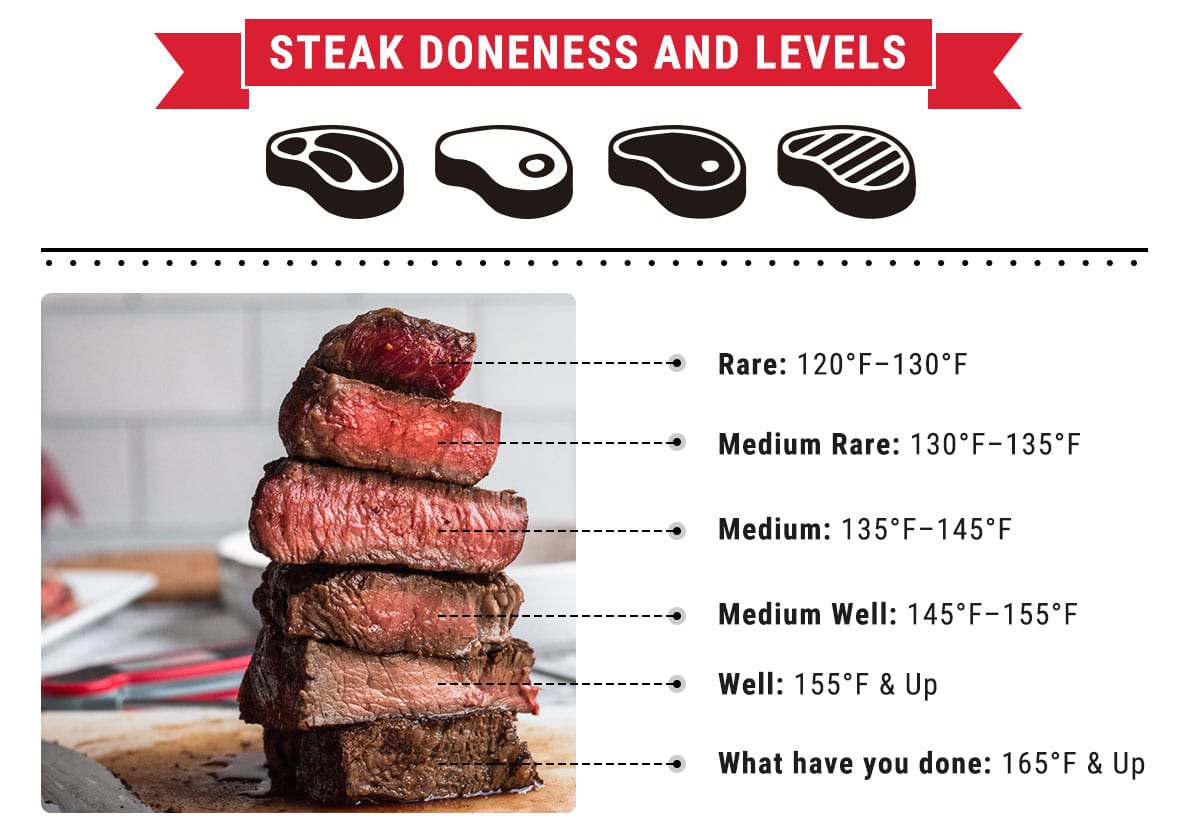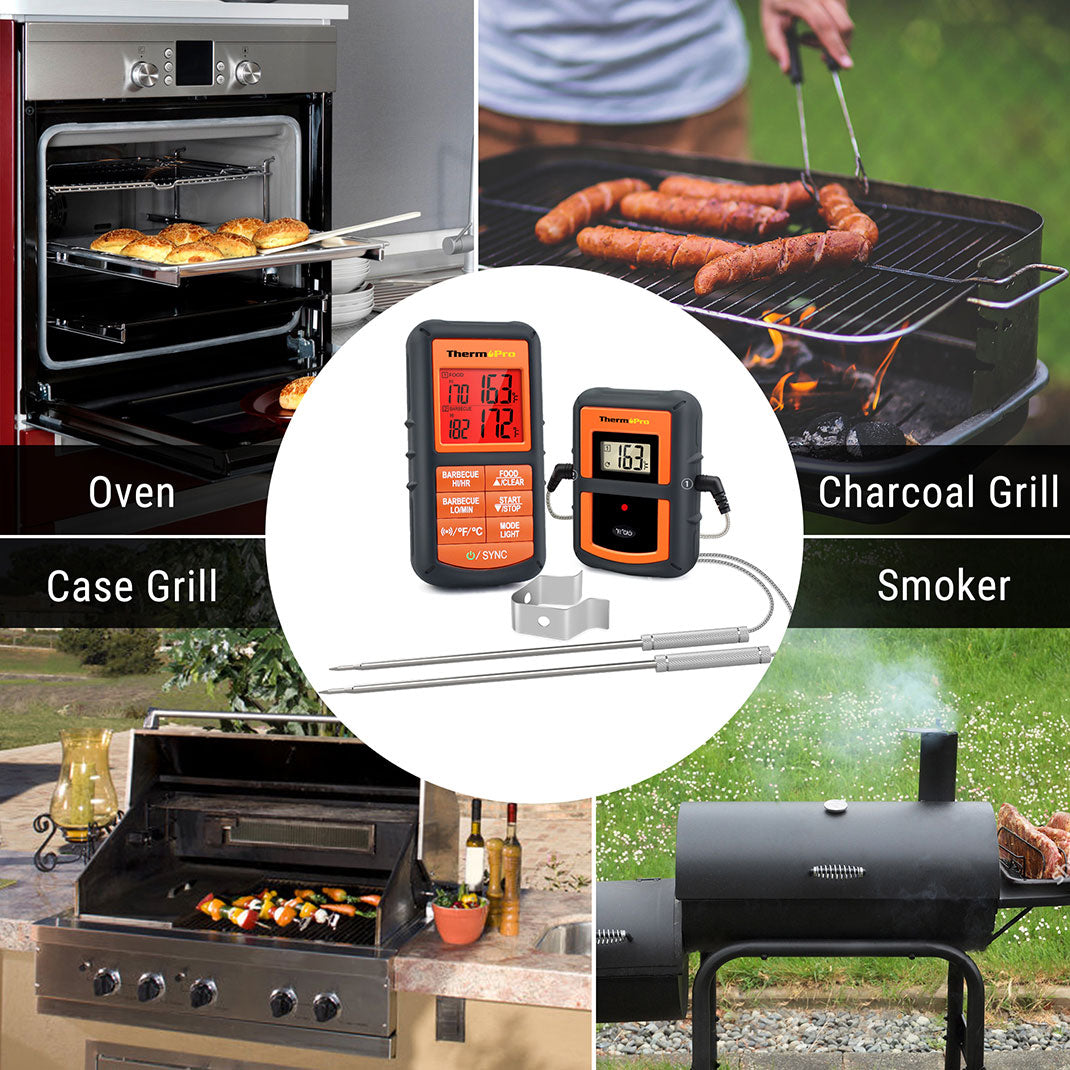Cooking your food to the correct temperature is extremely important for food safety. When meat is undercooked, you and your family can become susceptible to harmful bacteria. At the same time, you also do not want to overdo it, as meat that has been cooked too long becomes tough and loses flavor. So what is the best way to get accurate readings when cooking?
A ThermoPro Food Thermometer allows you to ensure your food is always cooked to the right temperature. But how do you read a ThermoPro meat thermometer properly to ensure you get a perfect meal every time you cook?
Here are 4 tips to quickly help you get accurate readings from your ThermoPro Food Thermometer.
Tip 1: Test before cooking
Though many assume that their digital devices are always reading accurately, this is not always the case. Although it’s never a good time to discover your digital food thermometer is not working properly, this situation is made worse if you discover this while cooking. As such, here are two quick tests you can perform before cooking to ensure that your ThermoPro Food Thermometer remains in good working order.

The first way is to measure the temperature of a glass of ice water. Start by placing a handful of ice cubes into a glass and fill it with pre-cooled water. Use a spoon to stir for 15 seconds, and then insert the thermometer probe into the center of the glass, again stirring for an additional 15 seconds. For best results, submerge the probe 2 inches below the water surface and keep the thermometer in motion. If the temperature reads 32°F after completing these steps, your ThermoPro Food Thermometer is well calibrated and ready to use.
The second way to ensure your thermometer is working properly has to do with water boiling. Because the boiling point of water varies with the elevation of your location, begin by finding out the boiling point that is specific to your location; the higher your elevation, the lower the boiling point will be. Then, fill a pot with 4 inches of water and heat it to boiling. As with the previous step, submerge the stem of the thermometer 2 inches below the water surface, and stir slowly for 10 seconds. If your test reading and the local boiling temperature match, your thermometer is ready for use!
Tip 2: Insert in the right place
Once you’ve determined that your thermometer is working correctly, it is important to ensure that your method for gauging temperatures is accurate as well. Your thermometer will read with much greater precision if you place it in the center of the thickest part of the food, and away from bone and fat. The lowest temperature of your food is found here, giving you a truer indication of how well-cooked your meat is as a whole.
The best way to find the thickest part of the food is to insert your meat thermometer into the deepest part. Slowly push it further into the food, watching the temperature on the display. The temperature should become cooler as you get closer to the center since it takes the longest time for heat to reach that part. Once the temperature begins to creep up again, you’ve gone past the center, and need to pull back.
Tip3: Test in multiple locations
While you do want to use the thickest part of the meat for your reading, it is not the only place to check. Instead, check the temperature in several parts of the food to help you determine if the ideal temperature has been reached. he lowest reading that you find should be the number that you go by.
Be sure to check each piece of meat or food individually, as you do not want to assume that all pieces are fully cooked just because one is. Also, keep in mind that when preparing meats, the food will keep cooking for several minutes once it has been removed from heat. For this reason, you may want to remove your food from heat when it is a few degrees below the desired internal temperature.
Tip 4: Check temperatures early and often
The best way to avoid over or undercooking your meat is to take frequent readings. Take care to begin this well before the meat reaches the desired temperature. It is important not to take any temperature readings prior to the first flip of the meat. Until then, the meat will only be cooking from one side and the internal temperature will not be in the center.
After you have flipped it, the meat will begin cooking evenly and its internal temperature will become more stable. Continue to use the thermometer every few minutes to monitor the approach toward the target temperature. Since cooking temperatures can become very hot, use a ThermoPro Food Thermometer to take fast and accurate temperature readings so that you do not burn or harm your skin in the process.
Best way to get accurate readings
One of the secrets to a safe and delicious meat entrée is to find a method that allows you to cook it to just the right temperature. With a ThermoPro Food Thermometer and these helpful tips, you can become a master at perfectly cooking steak, chicken, or pork!






 288 Comments
288 Comments
























